-
U.S. most vulnerable reactor: Indian Point 3, N.Y.
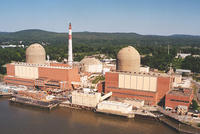
What are the odds that a nuclear emergency like the one at Fukushima Dai-ichi could happen in the United States? Tasked with ensuring nuclear power is safely used, the U.S. Nuclear Regulatory Commission (NRC) has compiled a ranking of 104 nuclear reactors to address such a question and they have found that each year, at a typical U.S. nuclear reactor, there is a 1 in 74,176 chance that an earthquake could damage the core and expose the public to radiation
-
-
Germany ends nuclear program
Last Thursday German chancellor Angela Merkel declared that her government plans to close its nuclear power plants in a “measured exit”; the decision to end Germany’s nuclear power program was a result of the continuing nuclear crisis in Japan; some believe that Chancellor Merkel’s announcement is driven more by politics than safety concerns; recent polls show that 80 percent of voters are opposed to nuclear power; Merkel’s party faces close regional elections in states where nuclear plants are located; Switzerland, Venezuela, and China have also announced that they will suspend or delay plans to build new nuclear plants
-
-
U.S. nuclear program under greater scrutiny
The ongoing nuclear crisis in Japan has caused countries around the world to reconsider its nuclear plans; Germany recently announced that it was ending its nuclear program, while Sweden, Venezuela, and China have all announced that they were temporarily suspending their nuclear programs to conduct safety reviews; lawmakers and engineers in the United States are also pushing for greater scrutiny of nuclear power plants; in its latest report the Union of Concerned Scientists sharply criticized the U.S. Nuclear Regulatory Commission (NRC) for not properly enforcing safety regulations at nuclear power plants;
-
-
Senate proposes new $10 billion "infrastructure bank"
Several U.S. Senators are pushing for the creation of a $10 billion “infrastructure bank” to spur investment in new infrastructure and to repair America’s rapidly aging roads, power grids, and bridges; the bill could attract as much as $640 billion in private investment over the next ten years; the Obama administration has proposed a similar plan; the bank would be self-sustaining as it is not allowed to finance more than 50 percent of a project’s costs; this bill faces an uncertain future given the current Congressional budget climate
-
-
Oregon declares state of emergency to repair damaged ports
The 11 March tsunami born of Japan’s 8.9 magnitude quake battered U.S. coasts and ports from Hawaii and the Pacific Northwest to southern California; the governor’s office in Hawaii expects damages to run about $10 million with estimates heading toward $50 million in California; one county in Oregon is reporting $25 million worth of destruction in one of three damaged ports
-
-
Oil industry creates center for off-shore safety
Following several accidents on off-shore oil rigs, the U.S. oil and gas industry will launch a center dedicated to investigating safety issues related to off-shore drilling; the center will be operated by the American Petroleum Institute (API) but will be walled off from the trade group’s lobbying work
-
-
Nuclear crisis worsening; growing radiation leaks at reactors nos. 3, 4
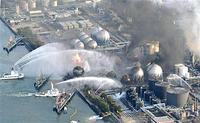
The situation at the Fukushima Daiichi nuclear power plant appears increasingly dire, as efforts to cool overheating reactors have failed; Japanese military fire trucks are now spraying water at the plant’s no. 3 reactor; earlier efforts on Thursday to use helicopters to dump water on the rods have failed; the U.S. Nuclear Regulatory Commission chairman is particularly concerned about reactor no. 4 which houses spent fuel rods; spent fuel rods, placed in cooling tanks, are rapidly overheating as they are boiling away the water they are submerged in; the secondary containment unit at reactor no. 4 has been breached and radiation is now freely leaking out of the plant; high radiation levels are hindering efforts to repair the reactors
-
-
Cable connected to reactor no. 2, coolant pumps to be restarted
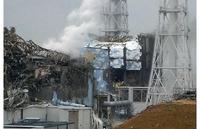
Tepco, the operator of the stricken reactors, says — and the IAEA confirms — that its engineers have been able to reconnect a power line to reactor no. 2; the 1-km cable connects to the main power grid; restoring power should enable engineers to restart the pumps which send coolant over the reactor and into the pools where radioactive waste is stored; Tepco said the process of reconnecting power could take up to fifteen hours; senior IAEA official Andrew Graham said the situation at Fukushima had not deteriorated, but could yet do so. He described the situation at “reasonably stable”; the head of the IAEA, Yukiya Amano, is heading to Tokyo to be briefed by Japanese officials
-
-
Japan worst-case scenario unlikely to cause catastrophic radiation release: expert
Two U.S. nuclear experts — both professors in the No. 1-ranked University of Michigan Department of Nuclear Engineering and Radiological Sciences — say that while exposed spent fuel rods at the failing nuclear reactors in Japan pose new threats, the worst-case scenario would still be unlikely to expose the public to catastrophic amounts of radiation; “The worst thing that could happen now is the fuel rods could be exposed to the air and that could be, then, down to our last barrier,” says one of the experts; “We could not have a recriticality, or a nuclear explosion. It’s physically impossible in this kind of system”
-
-
Past "hyperthermals" offer clues about anticipated climate changes
Bursts of intense global warming that have lasted tens of thousands of years have taken place more frequently throughout history than previously believed; most of the events raised average global temperatures between 2° and 3° Celsius (3.6 and 5.4° F), an amount comparable to current conservative estimates of how much temperatures are expected to rise in coming decades as a consequence of anthropogenic global warming; most hyperthermals lasted about 40,000 years before temperatures returned to normal
-
-
Shock absorbers making buildings earthquake-proof
An upstate New York manufacturer has developed dampers, or shock absorbers, which increase the earthquake resistance of a building by threefold; the patented dampers are based on technology first developed by the military to protect U.S. missile silos against Russian attacks during the cold war
-
-
Minnesota braces for spring floods
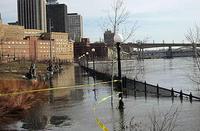
As dense snow packs in Minnesota begin to melt, officials are preparing for what may be their worst spring flooding yet; with record snow falls and heavy rains expected, weather officials are forecasting that floods are on their way; last September’s heavy rains saturated the soil with water which will exacerbate spring floods this year; officials are preparing the state for floods and St. Paul city officials have sent letters to all residents warning that they should find alternative places to stay and keep their vehicles in safe areas if they are forced to evacuate as water levels rise
-
-
Japan's nuclear crisis increasingly dire
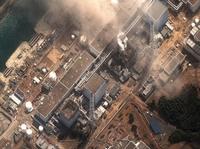
Japan’s ongoing nuclear saga took a decided turn for the worse on Tuesday when a third explosion at a nuclear reactor may have cracked the containment unit protecting it, causing large amounts of radiation to leak out; the government requested assistance from the IAEA on Tuesday and teams were dispatched to help monitor radiation and human health; citizens within a thirteen mile radius of the Fukushima Daiichi power plant were evacuated and 140,000 residents within a twenty mile radius have been advised to stay indoors; officials also established a twenty mile no-fly zone around the power plant; officials in Tokyo reported that radiation levels were ten times their normal levels; experts say that these increased exposure levels do not pose an immediate threat to people, but the long-term effect remains unknown; the Tokyo Electric Power Company is considering using helicopters to pour cold water on top of overheating rooftops covering spent fuel rods; a small crew of fifty technicians at the badly damaged power plant is bravely fighting through high radiation levels and fires to contain the three reactors
-
-
EU considering subjecting nuclear plants to stress tests
The EU is considering subjecting the 150 nuclear reactors operating in Europe to stress test to check their safety in light of Japan’s nuclear crisis; the EU’s executive arm has no power to send experts to nuclear plants to see whether they are safe, but can discuss stress tests to see if EU nations would authorize them
-
-
Californians anxious about safety of nuclear reactors

The parallels between Japan and California are sobering: As in Japan, California’s two plants — Diablo Canyon near San Luis Obispo and San Onofre in Southern California — sit in active earthquake zones; like Japan’s, both rest beside the ocean and were built more than a quarter-century ago; perhaps most troubling, the San Onofre plant straddles two counties in Southern California with a combined population of 6 million people
-